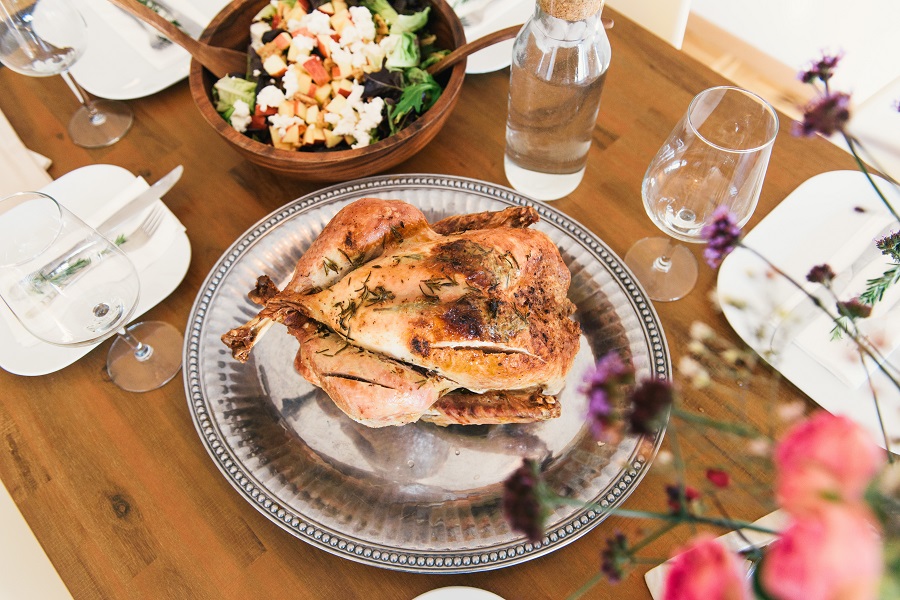How to eat healthy at holiday gatherings. People seem to fall into two camps when it comes to holiday food: deep dive into foods you know will make you feel bad (or can’t seem to resist), or you are able to stick with your plan. Here are a few tips to help you and your kids navigate the bounty this season.
Don’t arrive super hungry
Willpower is a tricky thing, especially when one of our strongest animal impulses takes over – hunger. Have you ever grocery shopped on an empty stomach and come home with items you would usually not purchase? Eating before shopping can help you avoid this, and you can employ the same logic with gatherings. Make sure you eat either a meal or snack prior to going to lessen the desire to go back for seconds and help you avoid foods you ordinarily wouldn’t want. Having snacks on hand for you and your kids can also help avoid undesirable food exposure.
Bring something to share
If you just have to have a treat, or you know there won’t be much offered to your liking, bring something to share. There are tons of ideas on Pinterest and blogs for gluten-free, dairy-free, low sugar alternatives to your favorites. Need some inspiration? Here are some staff favorites:
Focus on protein, fat and fiber
This is just a great, basic year-round nutrition tip for both adults and kids. Protein, fat, and fiber all keep blood sugar stable and keep you satisfied longer than a carb-heavy meal will. Use this concept whether you are building a meal or a snack. It is especially important for blood sugar control to pair protein, fat, and fiber with carbohydrate foods. When blood sugar is dysregulated, you or your child will likely experience mood swings, fatigue, brain fog, low energy, or big-time sugar cravings.
You’ll notice some foods cross categories, like nuts and seeds. They are mostly fat, some protein, and have some fiber as well. For snacks, try nuts/seeds, veggies with hummus or guacamole, or hard boiled eggs with a piece of fruit.
Fat Sources: Olives, avocado, coconut products, nuts/seeds and nut butters, egg yolks, and oils
Fiber Sources: Plant-based… think veggies, fruits, beans/legumes and grains (if you eat them).
Avoid potential pitfalls
Watch out for sauces, marinades, dressings and other ingredients that can have ingredients you may be avoiding like gluten, dairy, or soy. Same goes for desserts – if they are homemade, don’t hesitate to ask about ingredients, and if you are not satisfied with the answer it’s probably best to avoid (or bring your own)!
Share your needs
And finally, if you have a supportive family member that wants to prepare food for you, sharing the “can have” list is just as important as the “can’t have” list. This is not only a more positive mindset for you to focus on (vs restriction), it can really help the host or hostess hone in on what to offer. Additionally, send some ideas of your favorites ahead of time as a guide.
Hopefully these tips help you and your kids get through the holiday season. We’d love to hear your favorite tips too – comment below!


